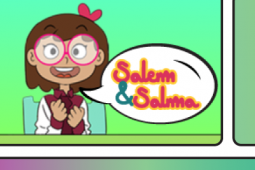What can I do to understand why students plagiarize?
Types of Plagiarism

Plagiarism is the act of wrongfully using someone’s ideas, concepts, text, information and presenting it as your original research without citation or giving credit to the original author.
What constitutes as plagiarism?
If you submit an assignment that contains quotes, text, images, etc. which is not your own and you don’t acknowledge the sources, it is considered plagiarism and is an offense. In most countries, the expression of one’s own ideas or concepts is considered as an intellectual property and is protected by copyright laws. If someone wrongfully uses copyrighted information then legal action can be initiated on the plagiarist (a person who commits plagiarism).
Giving an incorrect source of the information is also considered plagiarism, alongside rephrasing words while copying the sentence structure, copying more words or a passage as it is without mentioning the source of information.
Copying any idea, phrase, quotation, or any language from someone else without crediting them as the source is considered plagiarism. It doesn’t matter if the source belongs to a published author, or a student, or from a website without clear authorship or from a peer. Anything copied from someone and claimed as its own is considered stolen information, and not acceptable whether done intentionally or accidentally.
The Internet has made it easy for everyone to access information on diverse topics. You need to be more vigilant while using the information in assignments and project work. Sometimes it so happens that you refer to information from many sources (websites, books etc.) and forget the source later on. It is very important that whenever you refer to information from any particular site, you must save the URL or references and mention it at the end of your dissertation. Failing to do so can cause unnecessary legal issues.
Let’s see and understand some other types of plagiarism that are commonly practiced:
- Verbatim Plagiarism: If you copy language or word for word from another source and use the same in your essays and assignments, you are plagiarizing verbatim. Even though you have written down some information on your own along with the text or phrase that you have copied directly, it will still be considered as plagiarized.
- Mosaic Plagiarism: This kind of plagiarism occurs when someone does not copy a passage directly from one source. However, they copy some information from various sources and then develop a complete passage. Words are changed here and there with suitable synonyms without completely paraphrasing or citing the quotation. This approach is called Mosaic plagiarism, which is widely in practice.
- Inadequate paraphrase: When you consider a passage from a particular source, you have to restate the complete idea or concept in your own words. Just by changing two or three words here and there and copying the rest as it is in your document is an offense and considered as plagiarism.
- Uncited paraphrase: This kind of plagiarism occurs when you use someone’s idea and describe it in your own language. Even though you have changed a single word or line you have to cite the reference of the originator and give the credit that is due to him.
- Uncited quotation: This kind of plagiarism happens when you copy a quoted phrase as it is and present it in your essays and assignments. The right practice of avoiding plagiarism is whenever there is a need for a quote to be mentioned in your essays, you should provide the source link to help the reader refer back to the source and understand the concept better.
Always remember to respect other people’s work with dignity as you would expect them to do for you.
@2x.png)





















